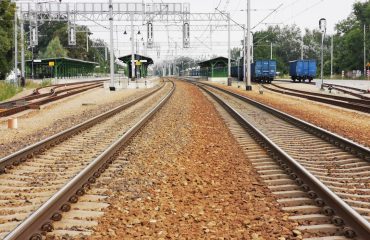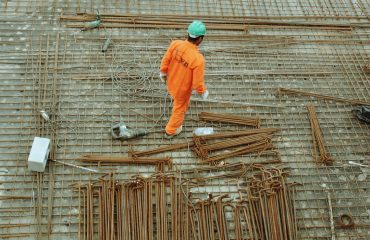HEA profiles, or Hot-Rolled Equal Angle profiles, are a cornerstone of structural engineering, particularly when dealing with heavy load applications. Their robust design, high strength-to-weight ratio, and ease of fabrication make them ideal for a variety of applications, from bridges and industrial buildings to large-scale machinery supports. This comprehensive guide delves into the crucial aspects of utilizing HEA profiles for heavy load structures, ensuring you have the knowledge to design and implement safe and efficient solutions.
Understanding HEA Profile Properties and Selection
Selecting the appropriate HEA profile begins with a thorough understanding of its properties. Key characteristics include:
- Dimensions: HEA profiles are defined by their leg length (typically denoted by a numerical value in millimeters, e.g., HEA 100 indicates a 100mm leg length) and thickness. Accurate dimensioning is crucial for precise calculations.
- Material Grade: The choice of steel grade (e.g., S235JR, S355JR) significantly impacts the yield strength, ultimate tensile strength, and overall load-bearing capacity. Higher grade steels offer increased strength but often come at a higher cost.
- Section Modulus (Zx and Zy): These parameters represent the resistance to bending about the x and y axes, respectively. Larger section moduli indicate greater resistance to bending stresses, critical for heavy load applications.
- Area Moment of Inertia (Ix and Iy): These values dictate the stiffness of the section and its ability to resist deflection under load. Higher values mean less deflection under the same load.
- Weight per Unit Length: This is important for overall structural weight considerations, particularly in applications where minimizing weight is a priority.
Proper selection involves careful consideration of these properties, considering the anticipated loads, support conditions, and design requirements. Engineering software and handbooks provide extensive data on HEA profiles to facilitate this process.
Analyzing Loads and Stresses on HEA Profiles
Accurate load analysis is paramount in ensuring the structural integrity of any design using HEA profiles. This involves:
- Dead Loads: These are the permanent loads on the structure, including the weight of the HEA profiles themselves, any attached components, and other permanent fixtures.
- Live Loads: These are variable loads, such as the weight of equipment, people, or materials that may vary over time.
- Environmental Loads: These include wind loads, snow loads, and seismic loads, which need to be considered based on the location and climate.
Once loads are determined, stress analysis is performed to calculate the bending moment, shear stress, and axial stress within the HEA profile. This typically involves using methods like finite element analysis (FEA) or simplified hand calculations based on beam theory. The results are then compared to the allowable stresses of the chosen steel grade to ensure the design meets safety standards.
Connection Design and Fabrication for HEA Profiles
The connection design is crucial for transferring loads effectively from the HEA profile to supporting structures. Common connection methods include:
- Bolting: High-strength bolts are widely used, often with pre-drilled holes for precise alignment. The bolt size and pattern must be carefully chosen to ensure sufficient shear strength and bearing capacity.
- Welding: Welding offers a strong and rigid connection, but requires skilled welders and adherence to strict welding codes to ensure quality and prevent defects.
- Riveting: Though less common now, riveting can be used for permanent connections, particularly in situations where welding is not feasible.
Proper fabrication practices are essential to minimize residual stresses and ensure the structural integrity of the connections. This includes using appropriate fabrication techniques, ensuring accurate dimensions, and performing quality control inspections.
Design Considerations for Heavy Load Applications
Designing with HEA profiles for heavy loads requires attention to several key aspects:
- Buckling: Slender HEA profiles are susceptible to buckling under compressive loads. Design must account for this by selecting profiles with sufficient stiffness or incorporating bracing elements to prevent instability.
- Deflection: Excessive deflection can lead to functional issues and potential damage. Design must ensure that deflections remain within acceptable limits.
- Fatigue: Repeated cyclical loading can lead to fatigue failure. Design must consider the number of load cycles and the magnitude of stress fluctuations to prevent fatigue-related issues.
- Corrosion Protection: Proper corrosion protection is crucial for the long-term durability of the structure. This may involve painting, galvanizing, or other protective coatings.
Addressing these considerations proactively ensures a robust and long-lasting structure capable of safely handling heavy loads.
Code Compliance and Safety Standards
Adherence to relevant building codes and safety standards is mandatory for all structural designs. These codes provide guidelines for design loads, material properties, connection design, and fabrication practices. Examples include Eurocodes (EN standards) and American standards (AISC).
Consulting with experienced structural engineers is highly recommended to ensure compliance with relevant codes and regulations and to obtain professional guidance on design and construction. Proper documentation, including detailed calculations, drawings, and material specifications, is essential for demonstrating compliance and facilitating successful project execution.
By carefully considering the aspects discussed above, engineers can effectively utilize HEA profiles to create robust and reliable structures capable of handling even the most demanding heavy load applications. Remember, safety should always be the paramount concern in any structural engineering project.
Tags: HEA Profile, Heavy Load Structures, Steel Sections, Structural Engineering, Design Calculations




